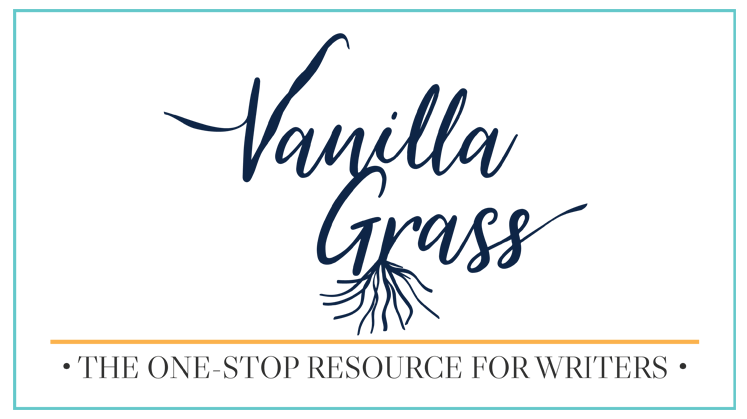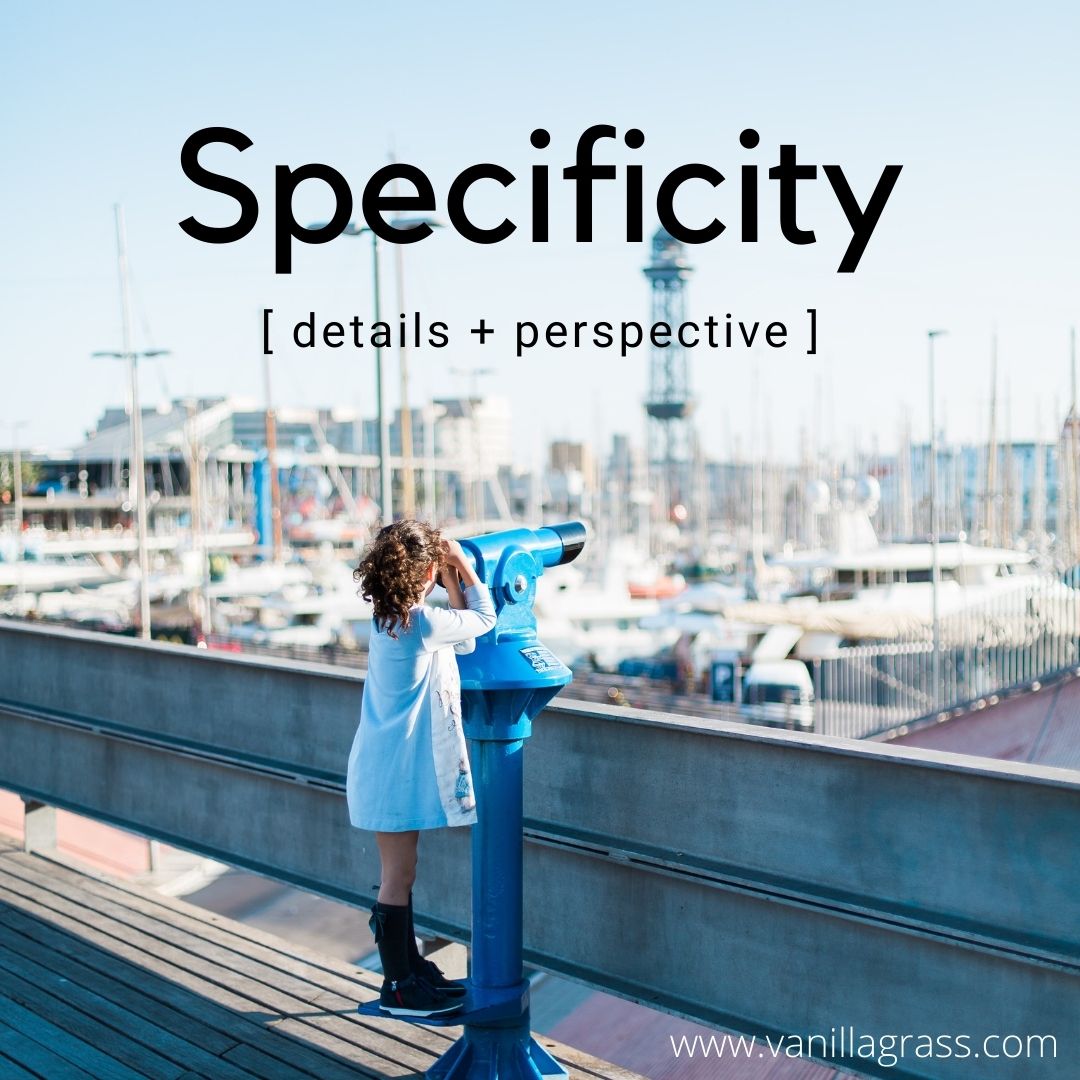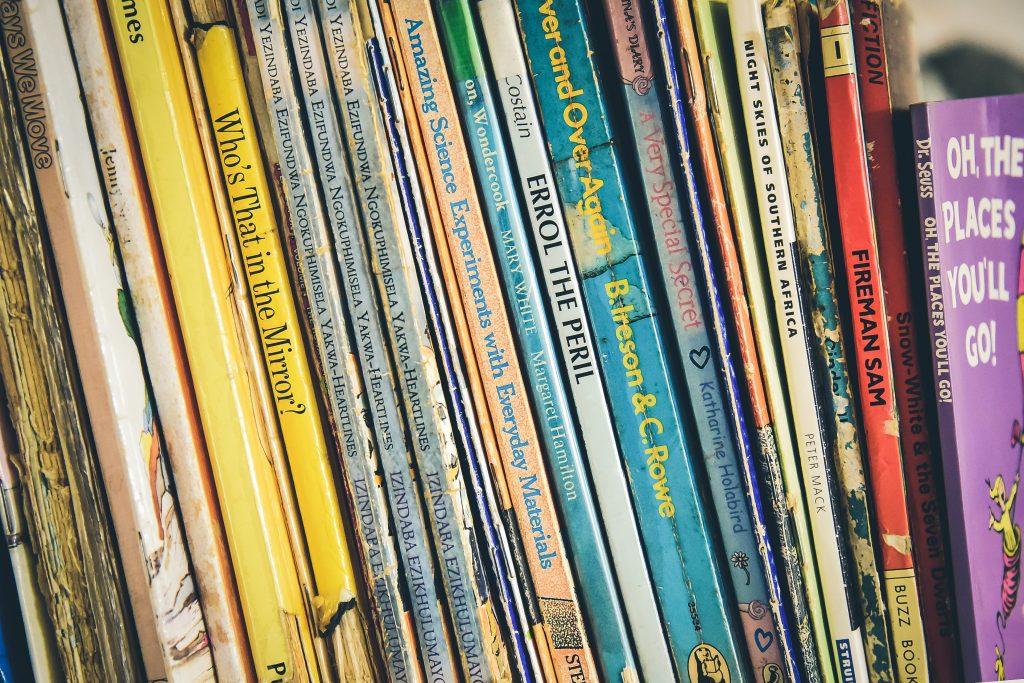
You know how sometimes people write stuff and it just doesn’t really, you know, sit right? There’s just something off, unquantifiable but everpresent?
Perhaps it’s the lack of specificity, like in the sentence above, that is doing you in.
And unfortunately, it is a common problem in the writing world.
So, besides helping to avoid the reader feeling disconnected, what are some reasons to be more specific when you write? And what are some steps you can take to be more specific in your writing?
Reason #1 to Be Specific in Your Prose: Preventing Misunderstandings

Makes sense, right? If you walked up to someone you didn’t know on the street and asked them about the things with the stuff, they’re going to look at you like you’re crazy.
So why do writers feel like they can get away with it in their novels?
Perhaps because their readers aren’t looking at them through their computer screens with a raised brow and puckered lips. Either way, it is totally preventable.
And writers should take efforts to avoid being misunderstood at all costs so their first-impression with readers isn’t lackluster. Especially since first-impressions that involve misunderstandings are hard to correct!
How to be specific to prevent confusion:
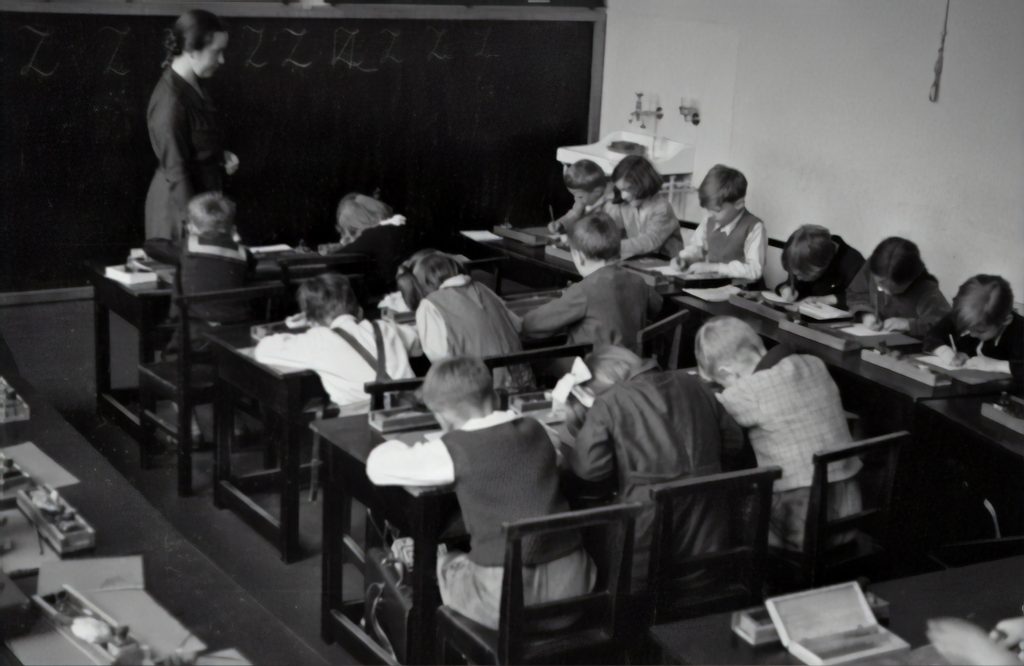
Let’s explore this with an example:
Mary walked into the school to meet Alice. She called her over and the two talked for a while. Then she got up and left her, and Mary cried.
Not helpful, right?
Why? Because the readers are probably confused about:
- Whether or not Mary and Alice are teachers or students. Or one of each.
- Who the pronouns in the second set of sentences are referring to.
- How long “a while” is.
- What they were talking about, and subsequently, why it matters.
- If the tears Mary is crying are happy or sad or something else entirely.
- When they’re having the talk.
- How old they are if they are students.
So how can we fix it?
New example:
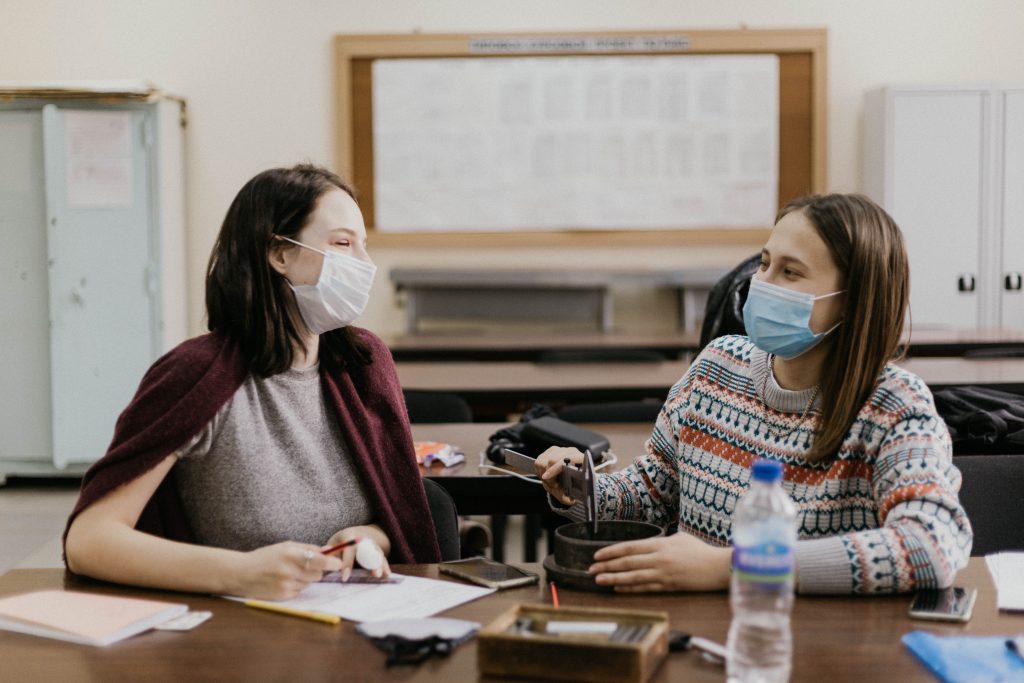
Mary tightened the straps on her Jansport as she hurried to school before the morning bell. Her mom would kill her if she was late to geometry again. Why did her first period have to be the worst?
Alice waited by her locker, tapping her foot like she was at a Taylor Swift concert. Her face, however, was anything but happy.
“Hey, Alice,” she said and beckoned her friend closer. “What’s going on? You look upset.”
“Of course, I’m upset! You went to David’s party without me.”
Mary opened her mouth, then snapped it back shut. She had. That was true. And she had no good excuse for it.
“I can’t believe you would do that,” Alice continued. “I had been looking forward to an invite to his house forever and you totally ditched me.”
Mary dropped her gaze to her scuffed sneakers. “Sorry.”
“Apology not accepted,” Alice huffed. “You’re a terrible friend.” She twisted around so fast her hair caught in the breeze and flicked toward Mary. Then she was gone, storming down the hallway.
Mary watched her go, tears pricking her eyes. She was a bad friend.
Did writing more specifically clear up the reader’s questions?

With that much more specific (and entertaining, am I right?) scene under our belts, let’s take a look at the questions readers were confused about the first time and see how well this second example addressed them.
- Whether or not Mary and Alice are teachers or students. Or one of each.
- Answer: Students. Mary has a backpack. Is going to class. Talks about geometry. And we know Alice is her peer because they share the same friend group.
- Who the pronouns in the second set of sentences are referring to.
- Answer: The dialogue is clearly defined by action tags, and to prevent confusion over there being two girls, their names are used often.
- How long “a while” is.
- Answer: The length of the conversation that was put into actual words gives us a feel for how long they chatted. Briefly.
- What they were talking about, and subsequently, why it matters.
- Answer: About Mary going to the party without Alice and how it was a betrayal to their friendship. We know it matters because Mary now feels she is a bad friend and has taken it to heart through her tears.
- If the tears Mary is crying are happy or sad or something else entirely.
- Answer: Sad, the context being the mini-fight she just had and the conclusion she makes at the end about being a bad friend.
- When they’re having the talk.
- Before school starts.
- How old they are if they are students.
- We know they are probably in 9th or 10th grade based on the reference to geometry and the context of their argument.
Being more specific and thorough in writing out a scene can give the reader a lot to process and answers a myriad of questions that may not have been on the page but are needed to clearly understand what’s going on and what’s at stake.
Reason #2 to Be Specific When Writing
Two words: reader engagement.

I’ve heard a fair share of new writers defend their vague prose with a lovely excuse like this:
I don’t want to be too specific! I’m trying to leave things up to the reader’s imagination so they can make the story their own.
Okay. I get that, to a point. The reason Bella Swan in Twilight is such a compelling character is because she’s such a bland person any girl can be her.
BUT.
She’s not bland because Stephani Meyer wasn’t specific. She was wonderfully specific…about how bland Bella Swan is.
The trick is what you leave up to the reader’s imagination. Because you have to keep in mind why your readers are reading.
The usual answer?
Escape!
And a small-town girl from Nebraska who has never left the state won’t want to imagine which types of trees your protagonist is hiding in in Haiti because the only trees she knows are oaks. It doesn’t match up. She knows it. And it doesn’t feel like an escape. It feels like home.
When you enrich your writing with specific details, it does two things for the readers:
- Assures them you know what you’re doing, that you did the research, and that you want them to immerse themselves in your world.
- Paints the picture and setting and mood so they don’t have to do the work!
Example of vague, boring text:
Sammie jumped down from his treehouse and landed on a patch of flowers before sprinting home to eat dinner.
Captivated?
Me neither.

Now, try this:
Example of specific, engaging text:
The scent of roasted pork chops and twice-baked potatoes wafted through the breeze and stirred a rumble in Sammie’s stomach. It must be dinner time. She leaned over the splintered, wooden edge of her treehouse and took in a whiff before eyeing the distance to the ground. It was a long way down, but she’d made the jump many times before. She grabbed a gnarled branch of the dogwood tree so that the white, puffy seeds shook loose and spread through the air like snow. Her grip stable, she stuck out her tongue, set her sights on the patch of poppies below, and leaped. She landed in the fragrant flowers with a thud, her dirty sneakers sinking in the wet grass. Checking to make sure all her bones were intact, she sighed with relief, then kicked up her heels and sprinted home.

Did your eyes glaze over this time?
Hopefully, not!
Even more, though, could you picture it? After the first scenario, did you think the flowers were poppies? The tree a dogwood? Did you know Sammie was a girl? Did you know she savored the smell of pork chops?
Did knowing these things help you connect better with the story?
Yes! Because they allowed you to enter into Sammie’s world, not a forced version of the one you already live in.
Conclusion:
Being specific in your writing not only clears up misunderstandings and helps the reader know what is really going on, but it also helps keep readers engaged and immersed in your story world.
So, go ahead! Take a look at your most recent prose and see if a bit of the lazy writing bug slipped in and made the story vague or unhelpful.
Then get specific. Choose some adjectives, pick some specific objects (like the Jansport in the first story, or the dogwood and poppies in the second), and ditch excessive pronouns.
Then see how well your story comes to life!
And if you’re looking for some more great resources for writing stories, be sure to check out our Quick Writing Tips series, check out our Interactive Plot Graphs, or our article on Story Structure!
